SuperPost: The historical evolution of the swords with photos and drawings. [ENG] Repowered.
In this opportunity I want to take before you a small historical overview of the evolution of ancient swords and weapons, taking into account this ancient art of handling swords and maneuvering weapons for the defense of empires or for the conquest of new lands and I want to mention this By means of drawings elaborated by me.

(Falcata) Greek sword with bronze handle and polished iron blade stripped and covered in its leather cartridge with a length of 65 cm, framed among other ancient knees like Katana and spear.
Beginnings of the Bronze Age.
In order to show the evolutionary process in a clear and concise way, we will locate the origin of the sword as a modern weapon in the Bronze Age. The first metal swords were made of copper, but because of the softness of the material in its pure state, the craftsmen hardened them by the technique of beatings and additions such as arsenic, adding tin to copper at the beginning of the Bronze Age, and Later lead as second attachment towards the end of the mentioned age, will be developing an alloy type more and more resistant. The first bronze swords obtained by casting would be simple sharp blades, which would be fastened to the handle by a series of rivets (Rivet Swords) resulting in an extremely fragile set that would tend to break through the blade and handle when used As a cutting weapon, leaving his bearer unarmed, possibly at the least opportune moment.
Thanks to this disadvantage began to implement shields and armor to counteract vulnerability and shields.
The Iron Age.
With the discovery of iron begins the second great age in the manufacture of portable weaponry. The first to use the new metal to make their swords were the Hittite empire, revealing their superiority against the rest of the materials like copper or bronze, in their endless struggles against the Egyptians, with the dismemberment of that empire towards the 1200 BC The secrets of its manufacture begin to spread throughout the Near East, in this way, and using as prototypes the ancient bronze swords, it begins towards the beginning of the 11th century and the end of the 9th century BC. The production of new swords and daggers. The oldest are found in the high valleys of Luristan, the border region between present-day Iran and Iraq. The handles of these swords evolve from the previous models in Bronze, in the form of flattened spikes to which they are fastened a few knobs, to later add a knob of a flattened discoidal shape.
Evolutionary picture of the swords from the 8th century BC to the 1st century AD
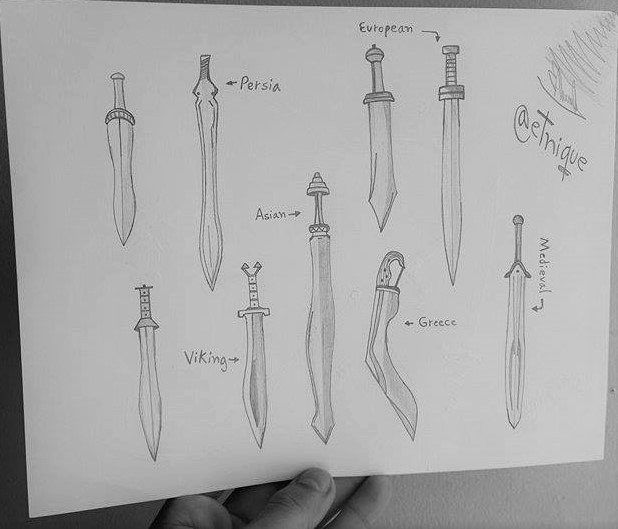
Knowledge about iron swords comes from the East.
The Old Age.
The development of the sword as basic equipment of the warrior, did not go unnoticed for the powerful Roman war machine, which armed his legions with two types of sword mainly. The Roman army, composed basically of infantry, depended in a certain way on its allied troops to form an effective cavalry, the latter being organized from native troops who dressed and armed themselves and the swords were part of their main threat, short swords Of iron but with great fixed and designed for deep cuts in the meat.
The Middle Ages.
The decline of Rome and the increasing importance of the Roman Empire of the East did not in principle bring substantial changes in the design of cutting weapons. The Roman sword of cavalry Spatha, was used time after the fall of the empire, including eventually in the armament panoply of the medieval warrior.
The defensive armament of the warrior throughout the eleventh century, consisted mainly of a large shirt of netting, called Hauberk, faithfully described in the tapestry of Bayeux, magnificent document of the battle of Hasting in the year 1066. The swords represented in Said tapestry are characterized by its broad double-edged blade, designed for cutting and chopping. The hilt of these swords was short, one-handed, despite the tradition that tells how Harald Hardrada disdained the use of the shield to wield the sword with both hands. Many of the swords of this time were made in some European centers, and occasionally, they had inscriptions with the name of the spades damasquinado in copper or brass and even in gold and silver.
Since the end of the eighth century, Vikingsmiths had developed a technology to produce sheets of a homogeneous steel, which even or exceeded in quality those produced by the method described above.
In the Middle Ages you could see many swords with messages and jewels embedded.
Development of swords in cardboard.
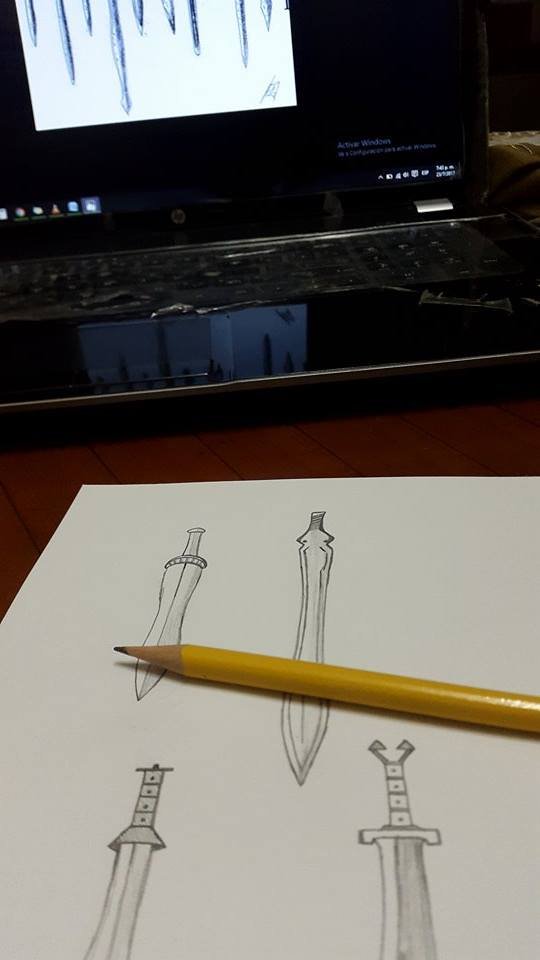
Only with my pencil skill can you recreate these stupendous weapons used for countless wars.
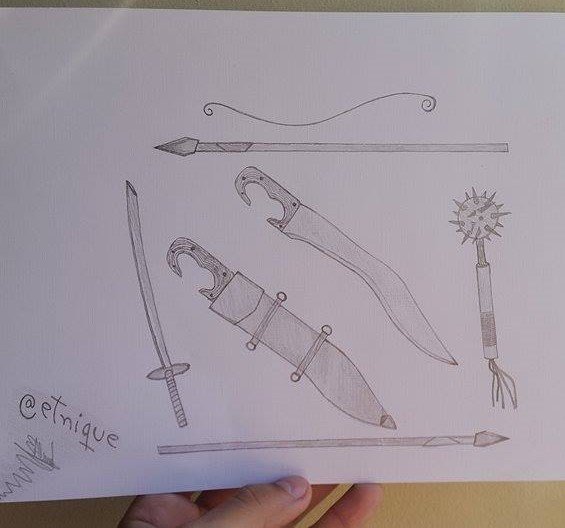

The final result of both drawings.

Japanese Antiquity: "The Katana as the main weapon of the ancient warriors of the Nipon empire and source of honor for the Samurai"
The Katana, also called the "samurai sword", is the Japanese sword par excellence and is defined as a single-edged curved sword. The Katana has been considered as the most perfect and effective handgun that man has designed throughout history. Katanas combine three elements. Its artistic beauty as a piece of handicraft. The solidity that allows you to split a body in two just out of its sheath. And the precision, coming from a single human hair.
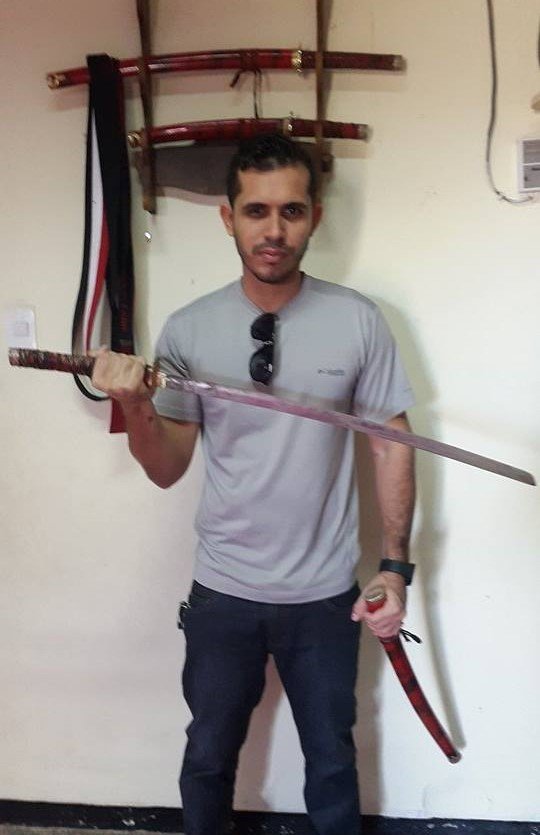
In my hands I have a katana that draws.
The origins of the Katana sword must be sought in the eighth century AD. C. At that time it develops in Japan the Heian era (782-1184) and the system of confrontation in the battle was changing. The fight on foot decays and comes into play the horse that together with the sword, becomes an element of fundamental struggle. In this situation, the traditional straight sword called chokuto but was not effective and therefore it became necessary to design a sword that fulfilled the needs of the soldiers who were fighting on horseback: effectiveness and trajectory.

The process of manufacturing the Katana is long, complex and marked by a strong symbolic component. The artisans were alchemists who thanks to the experience managed to know the secrets of the metal transmitting them from generation to generation. The blacksmith prayed a prayer to the Buddha before he began to create the sword, which demonstrates the spirituality surrounding the entire forging process.
The mode of manufacture of these beautiful swords consists of 4 phases such as casting, folding, tempering and polishing were techniques used by craftsmen to make these swords, unique pieces capable of cutting a body in a pass and are Extremely strong.

In my opinion these swords and all weapons of war left a mark on history leaving a long succession of historical events and traditions that today captivate us and that we enter more in the ancient world to know more about our origins and how the Humanity at that time by means of arms were forged empires and a future for each tribe.
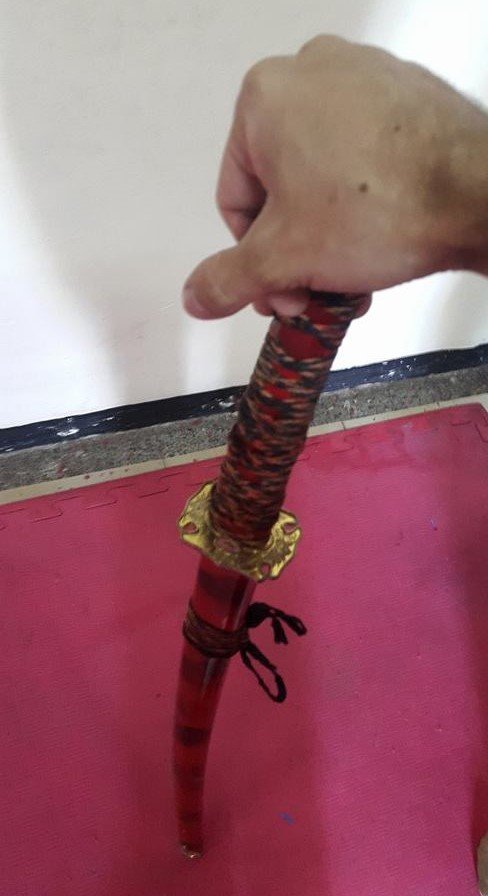
Be very careful with the swords as they are very dangerous, and so I say goodbye on this opportunity leaving a photo of me in possession of a Samurai sword.
Source of images, photos and drawings: Own.
Try to summarize the information to be of your liking and I hope you like my evolutionary description of the swords.
Have a Happy Day, dear community.
